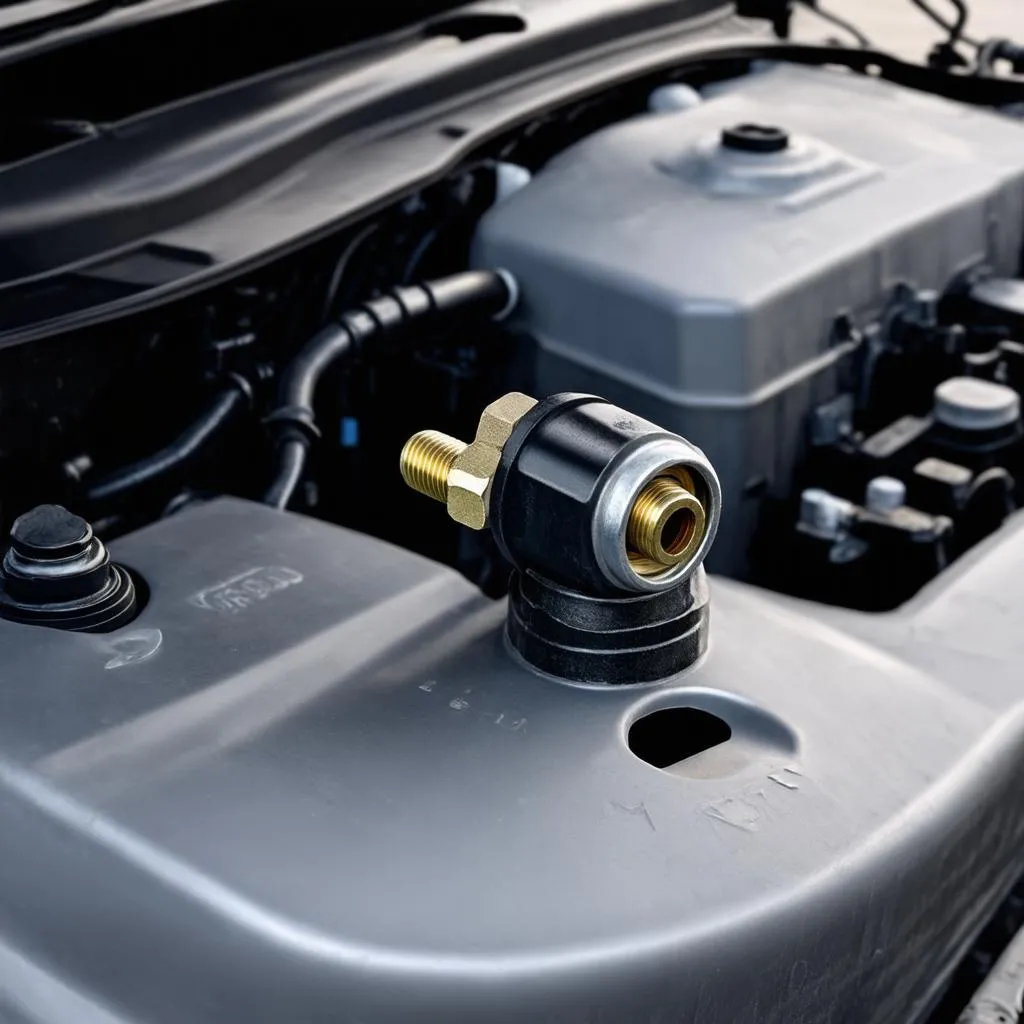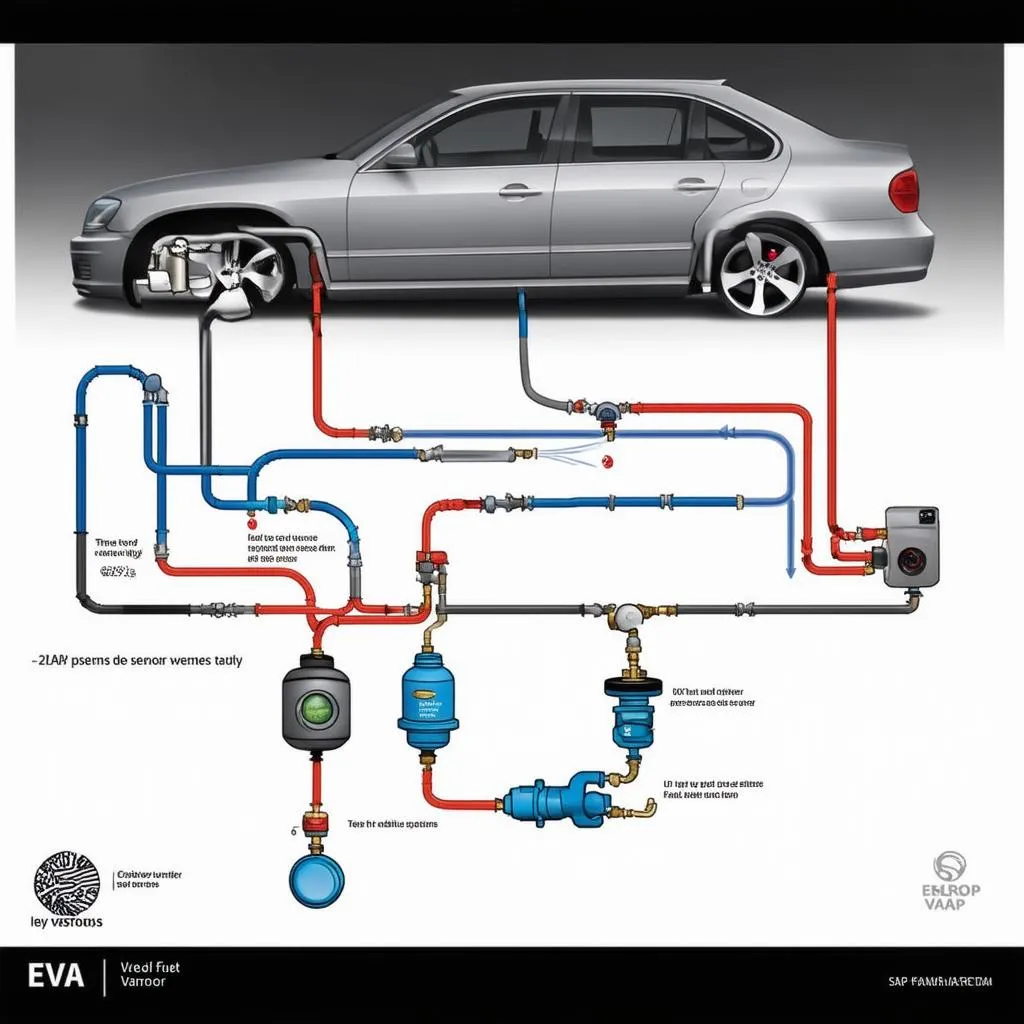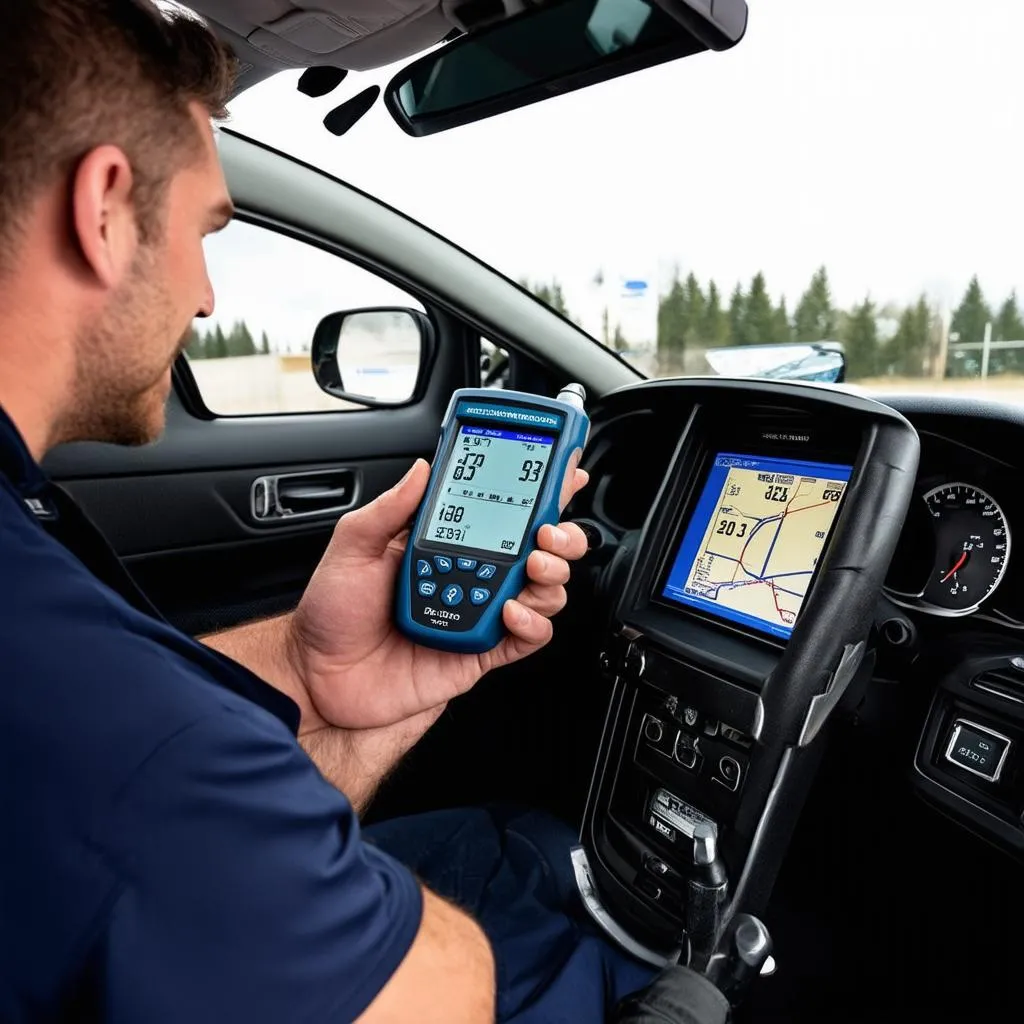Have you ever been driving down the road, enjoying a smooth ride, when suddenly your dashboard illuminates with a check engine light? You pull over, take a deep breath, and wonder, “What just happened?” Many car owners face this dreaded scenario, and often, the root cause can be a mysterious code like “P1450” – a code that can be especially perplexing for Ford owners.
Understanding Ford OBD II P1450 and its Significance
The “P1450” code is a common diagnostic trouble code (DTC) found in OBD II-equipped Ford vehicles. It stands for “Evaporative Emission System Leak Detected (Small Leak).” But what does that really mean?
Let’s break it down. The Evaporative Emission (EVAP) system plays a critical role in preventing harmful vapors from escaping your car’s fuel tank into the atmosphere. Think of it as a complex puzzle of hoses, valves, and sensors, all working together to capture those vapors and channel them back into the engine to be burned. When the EVAP system detects a leak, even a small one, it flags this issue by triggering the P1450 code.
The P1450 code is often related to the following:
- Fuel tank pressure sensor: This sensor monitors the pressure inside the fuel tank to ensure it’s properly sealed. A faulty sensor can lead to inaccurate readings and trigger the P1450 code.
- Evaporative Emission (EVAP) purge valve: This valve controls the flow of fuel vapors from the fuel tank to the engine. If the purge valve is stuck or malfunctioning, it can disrupt the flow of vapors, causing a leak.
- Fuel tank cap: A loose or damaged fuel tank cap is a common culprit, allowing fuel vapors to escape into the atmosphere.
- Fuel lines and hoses: Cracked or leaking fuel lines and hoses can contribute to the EVAP system leak.
The Importance of Addressing the P1450 Code
Addressing the P1450 code isn’t just about fixing a check engine light – it’s about ensuring your vehicle’s safety and maintaining its environmental compliance. A leaking EVAP system can contribute to increased fuel consumption, as the engine is burning off uncaptured fuel vapors. It can also affect vehicle performance, leading to a rough idle or hesitation.
Furthermore, a leaking EVAP system can lead to environmental problems by releasing harmful pollutants into the atmosphere.
Addressing the P1450 Code
First Steps: The first step in addressing the P1450 code is to check your fuel tank cap. Make sure it’s securely tightened. If your cap is damaged, consider replacing it.
Professional Diagnosis: If simply tightening your gas cap doesn’t resolve the issue, it’s essential to have your vehicle professionally diagnosed. A skilled technician equipped with a dealer scanner specifically designed for European cars can identify the underlying cause of the P1450 code.
Common Causes and Resolutions:
- Fuel tank pressure sensor: If the fuel tank pressure sensor is faulty, it will need to be replaced. A mechanic will use a diagnostic tool to verify the sensor’s functionality and replace it if necessary.
- Evaporative Emission (EVAP) purge valve: A malfunctioning purge valve can be tested and replaced if necessary. The technician will use a diagnostic tool to check the valve’s operation and determine if it needs to be replaced.
- Fuel lines and hoses: A mechanic will visually inspect the fuel lines and hoses for cracks or leaks. Any damaged lines or hoses will need to be repaired or replaced.
The Importance of Timing
Some car enthusiasts might be tempted to delay addressing the P1450 code, assuming it’s a minor issue. However, neglecting a persistent check engine light can lead to more serious problems down the line.
A small EVAP leak can eventually worsen, leading to significant fuel loss and even potential damage to the fuel system. It’s always best to address any check engine light promptly and avoid potential long-term complications.
The P1450 Code: A Feng Shui Perspective
It might seem like an odd association, but the P1450 code can be viewed through a Feng Shui lens. In Feng Shui, the concept of “Qi” (pronounced “chee”) represents life energy that flows through all things. A car, like any machine, possesses a form of Qi – a harmonious flow of energy that contributes to its smooth operation.
When the EVAP system is compromised, the flow of Qi within the car becomes disrupted. The leak disrupts the balance, creating a sense of “stagnation” and affecting the vehicle’s overall performance. Addressing the P1450 code is, in a sense, restoring the Qi flow, promoting a smoother and more efficient operation of your vehicle.
Frequently Asked Questions
Q: How can I prevent the P1450 code from appearing again?
A: Always ensure your fuel tank cap is securely tightened. Regularly inspect fuel lines and hoses for any signs of damage. Consider having your vehicle serviced regularly to catch any potential issues early on.
Q: Can I drive my car with the P1450 code?
A: While you can drive your car with the P1450 code, it’s not recommended. The code indicates a potential leak that can worsen over time. It’s best to address the issue promptly to prevent further complications.
Q: Is the P1450 code serious?
A: The P1450 code is a reminder of the importance of maintaining your vehicle’s EVAP system. While it might not be an immediate danger, neglecting it can lead to more serious problems in the future.
Similar Codes and Products
Other related diagnostic trouble codes that you might encounter include:
- P0440: EVAP System Leak Detected
- P0441: EVAP System Leak Detected (Gross Leak)
- P0442: EVAP System Leak Detected (Small Leak)
You might find these products helpful in diagnosing and addressing the P1450 code:
- Dealer scanner for European cars: These diagnostic tools are specifically designed to read and interpret OBD II codes for European vehicles, providing a comprehensive understanding of your car’s health.
Supported Vehicles
The P1450 code is typically associated with Ford vehicles equipped with OBD II technology. This encompasses a wide range of Ford models, including popular choices like the Focus, Fiesta, Mustang, and F-Series trucks.
Further Exploration
If you’re interested in learning more about automotive diagnostics, check out our other articles on techcarusa.com:
- OBD II Codes: A Comprehensive Guide: A detailed explanation of OBD II codes and their significance.
- Troubleshooting Your Car’s Check Engine Light: Tips and tricks for understanding and addressing check engine lights.
Call to Action
If you’re facing the P1450 code or any other automotive diagnostic issues, don’t hesitate to reach out to us. We have a team of experts available 24/7 to provide support and guidance on all your automotive needs.
Contact us via Whatsapp: +84767531508
Conclusion
The P1450 code might seem daunting at first, but it’s a common issue that can be effectively addressed with the right expertise. By understanding the code’s significance and taking proactive steps to diagnose and resolve it, you can maintain your vehicle’s performance, efficiency, and environmental compliance.
Remember, a well-maintained car is a source of pride and peace of mind. So, if you’re experiencing the P1450 code, don’t delay. Get in touch with a qualified mechanic to restore the harmonious flow of Qi within your vehicle!
 Fuel Tank Pressure Sensor
Fuel Tank Pressure Sensor
 Evaporative Emission System
Evaporative Emission System
 Dealer Scanner for European Cars
Dealer Scanner for European Cars